Growing Gerbera Daisies – Knockout Floral Forms That Are Ideal For Cut Flowers

PERENNIALS > GERBERA
Reviewed By COLIN SKELLY

Colin is a Horticulturist and Horticultural Consultant with experience in a range of practical and managerial roles across heritage, commercial and public horticulture. He holds the Royal Horticultural Society’s Master of Horticulture award and has a particular interest in horticultural ecology and naturalistic planting for habitat and climate resilience.
IN THIS GUIDE
Gerbera doesn’t merely symbolise happiness, it verily radiates it and will infuse its bewitched viewers with joy and uplifting sensations.
Gerberas come in various floral forms and in a mind-boggling array of hues spanning the gamut of the warm spectrum.
In a bed, on a windowsill, or in a vase – they’re knockouts!
Overview
| Botanical Name | Gerbera |
| Common Name(s) | Gerbera Daisy, Transvaal Daisy |
| Plant Type | Perennial |
| Native Area | Cultivars from plants of South American, African and Asian tropics |
| Hardiness Rating | H2-H4 |
| Foliage | Semi-evergreen |
| Flowers | Various bright colours, daisy-shaped flowers |
| When To Sow / Plant | April, May, June, September, October |
| Flowering Months | June, July, August, September, October |
Sunlight
Preferred
Full Sun
Exposure
Sheltered
Size
Height
0.1 – 0.5M
Spread
0.1 – 0.5M
Bloom Time
June – October
Soil
Preferred
Loam, sand
Moisture
Well-drained
pH
Acidic / Neutral
Gerbera comprises hundreds of disk florets in the capitulum to which the full double forms add many dozens of ray florets.
The flower often presents a perfectly circular form at the centre of which is another circular disk – the capitulum.
Sometimes this central disk has a colour of its own; sometimes it matches those of the rays.
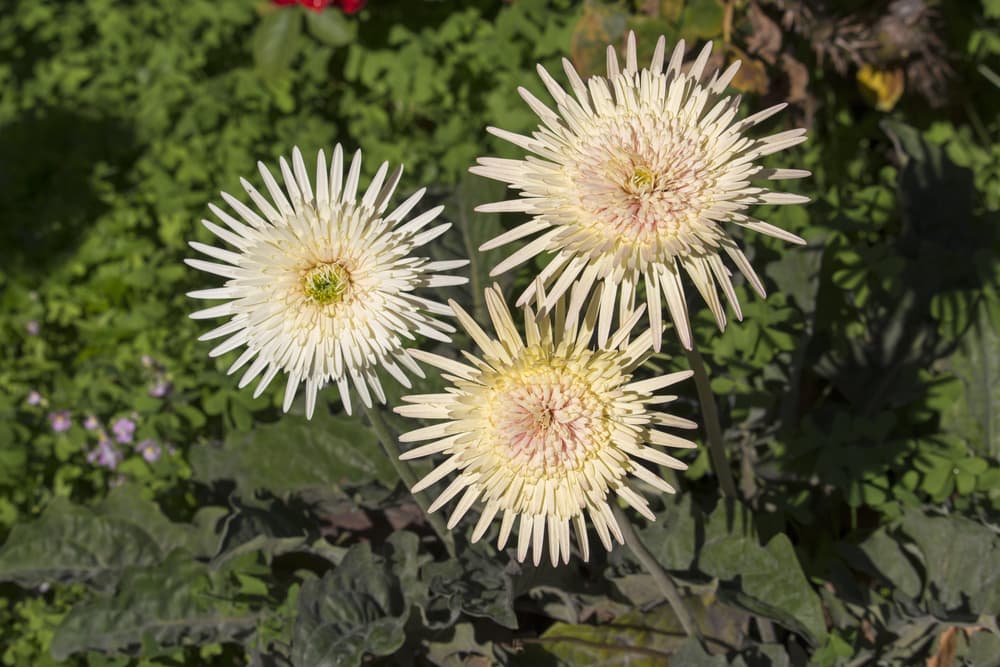
And the word ‘rays’ could hardly be more appropriate for any other flower because these rays are narrow, long, straight, and finely tipped.
So here’s what we end up with:
- Gerbera single form is disk-shaped simplicity itself and is the ideal vehicle for white and pale yellow and primrose yellow varieties, whispering purity and innocence.
- Gerbera semi-double form has a floral complexity and depth and is made to order for orange and pink tones, radiating an upbeat joy.
- Gerbera full double form is rich, even lush, and is the one that can do justice to the vermilion and crimson varieties, which project intensity and sensuousness.
What is written here is only an outline – Gerberas are more multi-dimensional than most flowering plants.
For example, single form includes flowers with both a single row but also a double layer of rays, and florists have four classifications for the double form flower.

The Gerbera genus is a member of the Aster family, well known for its wealth of flowering plants.1Outen, C. (2022, April 15). Gerbera Daisy. Home & Garden Information Center | Clemson University, South Carolina. Retrieved March 16, 2023, from https://hgic.clemson.edu/factsheet/gerbera-daisy/
This family is also known as the Daisy family and, as it happens, G. viridifolia rather resembles the common European daisy.

The accepted species count for Gerbera is only 24.2Gerbera. (n.d.). Kew Royal Botanic Gardens. Retrieved March 16, 2023, from https://powo.science.kew.org/taxon/urn:lsid:ipni.org:names:331624-2
While most of them, including those that are horticulturally important, are native to Africa, a few species are native to South America and southern Asia.
In their native climes and also in tropical and sub-tropical countries Gerberas are evergreens but in the UK, depending on the combination of the series or variety and your region, a plant may be anything from a tender annual to a hardy evergreen!
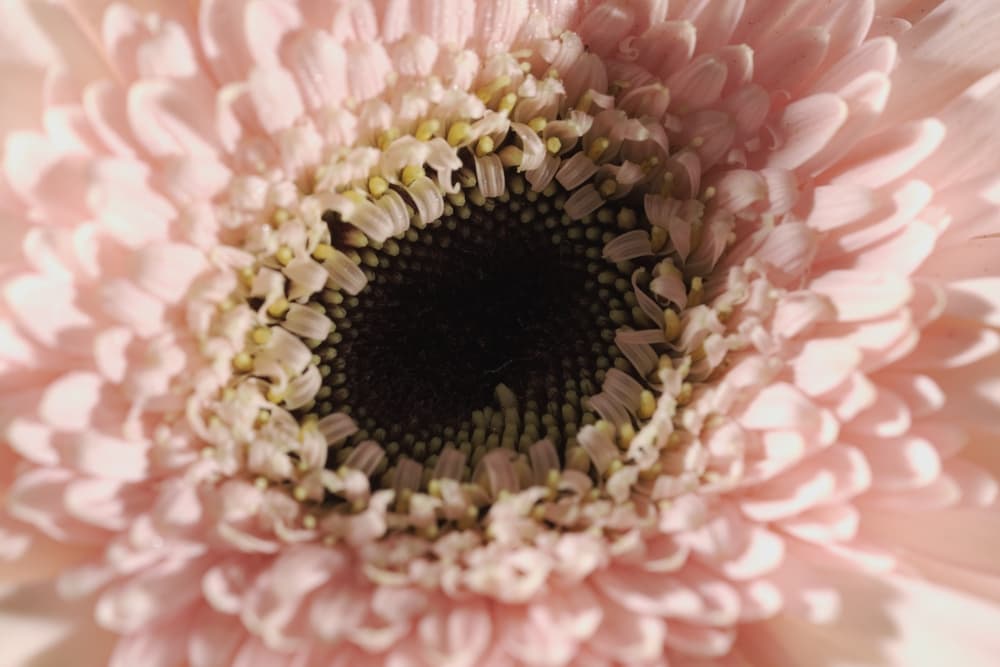
Tender or hardy, annual or evergreen, one thing’s for certain: if you lay out some Gerberas in your garden or inside your home, you will have flowers that many people find exceptionally pretty but also inherently cheering and joyful.
Transplanting
When transplanting Gerberas in any way, be sure to keep the soil line just a little higher than what it was – say 4cm higher for a mature plant.

It is better that the upper part of the root ball be just slightly exposed than for the crown to be even a little way in the soil, as these plants succumb all too readily to crown rot.
Gerbera Plant Care
To grow Gerberas as outdoor perennials in the United Kingdom you have to evaluate two factors: the hardiness of the varieties in question and your location.
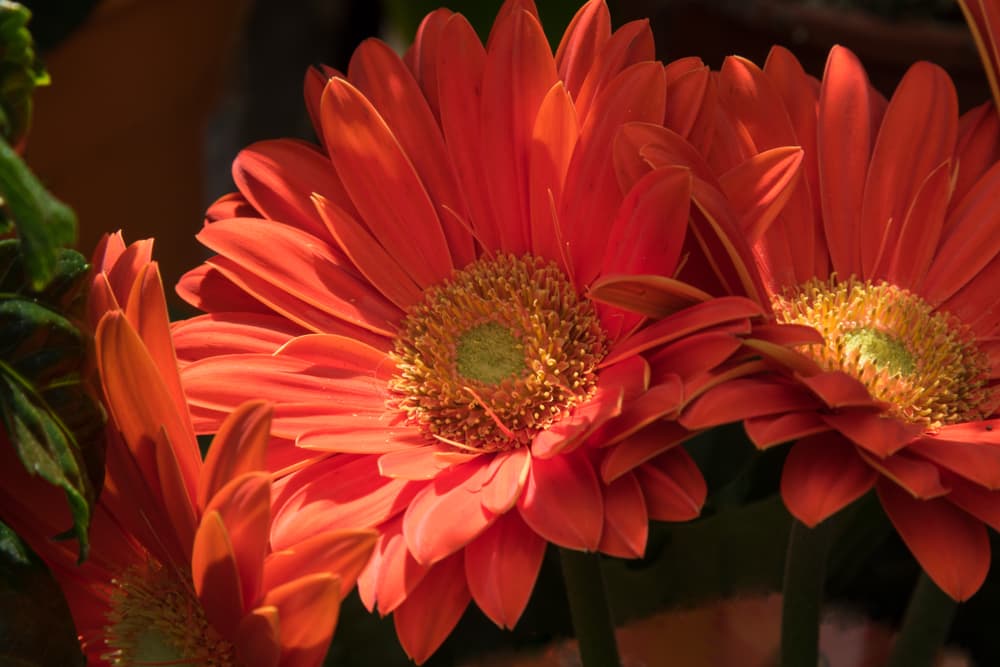
For example, ‘Garden Jewels’ series’ plants are hardy to H5 but ‘Landscape’ series are very tender with a rating of only H2.
Hardiness
If the varieties are hardy to H4 or hardier you can grow them as outdoor plants in most regions of the country.
If they are hardy only to H2 (tender Gerberas) you may be able to plant them outdoors, but only if you live along the southern coastal curve of the country – otherwise, you should grow them in containers so they can be overwintered indoors.
“Despite the fact I garden in one of the mildest parts of the UK, I still can’t grow Gerberas outside year round,” shares Horticulturist Colin Skelly.
“This is because winter moisture, even in relatively free draining conditions, is just too great for the plants to persist.

“Keeping them in pots over winter would be enough to keep them going, ready for re-planting or putting outside in containers the following spring.”
Most series and cultivars have a hardiness rating of H3.
It is because of this fine balancing act that these evergreens are in the main considered half-hardy semi-evergreens in the United Kingdom.
In countries with subtropical climates, they are very much evergreens. In any case, you can grow any Gerbera as an annual anywhere in the country.
Soil Requirements
Gerberas need fertile, nutritious soil that is very well-drained.
A sand- or chalk-based soil amended with organic matter like compost, peat moss, and/or well-rotted manure would be perfect.
To ensure very good drainage incorporate some perlite into the soil and consider laying a bottom layer of grit or gravel.
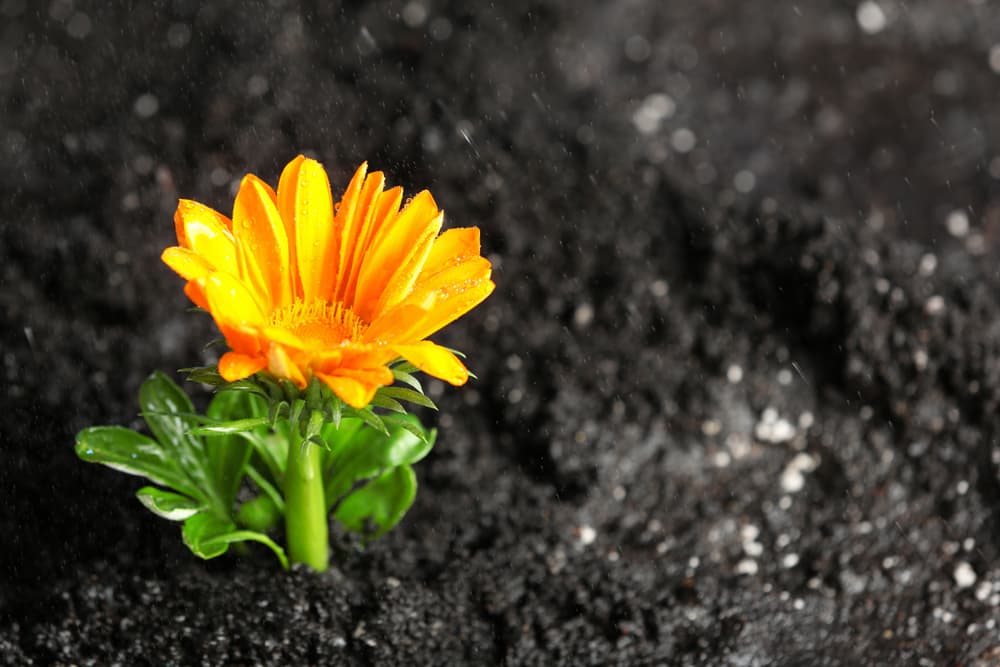
Soil pH plays a big role in Gerbera bud formation and flowering and ideally it should be from 5.6 to 6.0 – Moderately Acidic.
Of course, you have some leeway but the further away one gets from this range the greater the negative impact on flowering.
Excluding the compact varieties and series, and the ones that have been developed for pot-growing, Gerberas are especially deep-rooting plants so the soil you prepare should be deeper than for other garden plants.
Temperature
Another factor that strongly influences flowering is the temperature.
If temperatures stay or are controlled within 10-20°C day and night, averaging about 17°C during the day and about 13°C centigrade during the night – the flowering season will be much extended and the plants may even bloom all through the year.
Aspect
In the United Kingdom Gerberas should be sited in full sun.
In the milder regions they could use some afternoon shade in summer and in warm weather.

If and when they are indoors in containers they should receive the maximum amount of sun but no less than four hours.
Watering
Water mature plants well, soaking the soil, about twice a week in summer.
Outdoor plants may be watered deeply though the soil should drain very well.
Reduce the frequency and amount of water in winter.
Water Gerberas from soil level only. Do not get water on the foliage; keeping foliage dry will go a long way to preventing diseases.
Also, water them in the morning, preferably between 8 and 10 AM.
Fertilising
In spring and summer fertilise the plants with a liquid fertiliser.
Dilute it suitably, per instructions, for outdoor plants. Dilute it even further for container plants.
Feed every three weeks for best results, and taper off in mid-autumn.
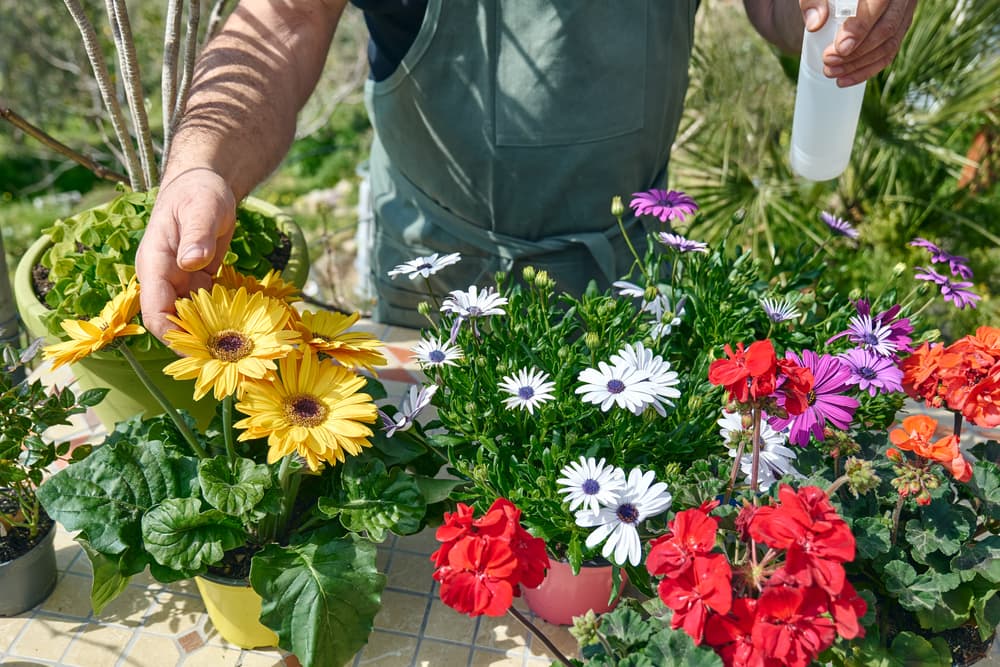
However, if your plants are so sited that they will be in optimal conditions year-round and are set to flower year-round, then feed them year-round too but do so every five weeks.
If you have grown Gerberas in containers and your varieties are not hardy enough to be kept outdoors in your region, bring them indoors at the end of autumn.
Keep them in a sunny spot and reduce the amount of watering though the soil should not fully dry out or stay dry.
Pruning
You do not need to prune Gerberas per se but you can minimise the chances of pests and diseases by taking two preventive measures.
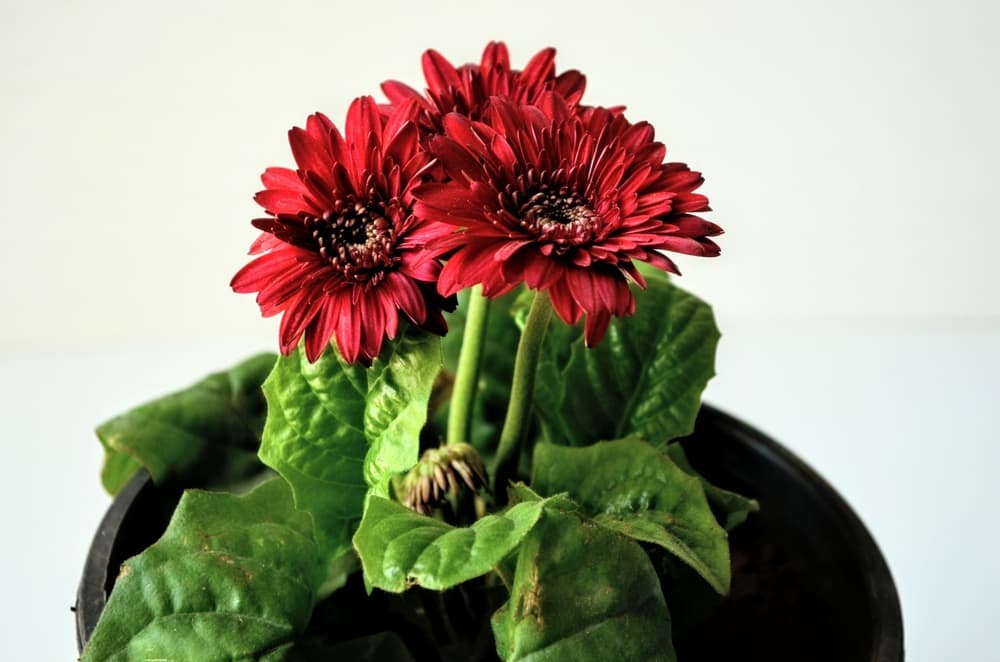
First, prune so as to keep the centre of the plant open; this will allow sunlight and air to reach this all-important part of the plant.
Actually, there is a second, equally important, reason to keep an opened-up crown: sunlight reaching the centre of the plant enhances and increases bud formation.
Second, on a periodic basis remove both damaged or wilting leaves and spent flowers.
References
- 1Outen, C. (2022, April 15). Gerbera Daisy. Home & Garden Information Center | Clemson University, South Carolina. Retrieved March 16, 2023, from https://hgic.clemson.edu/factsheet/gerbera-daisy/
- 2Gerbera. (n.d.). Kew Royal Botanic Gardens. Retrieved March 16, 2023, from https://powo.science.kew.org/taxon/urn:lsid:ipni.org:names:331624-2

